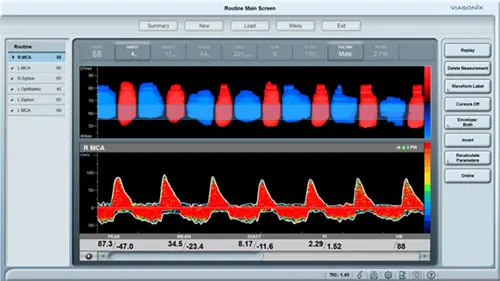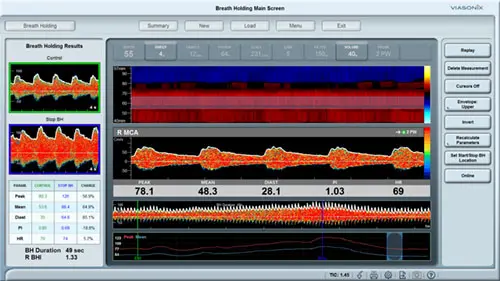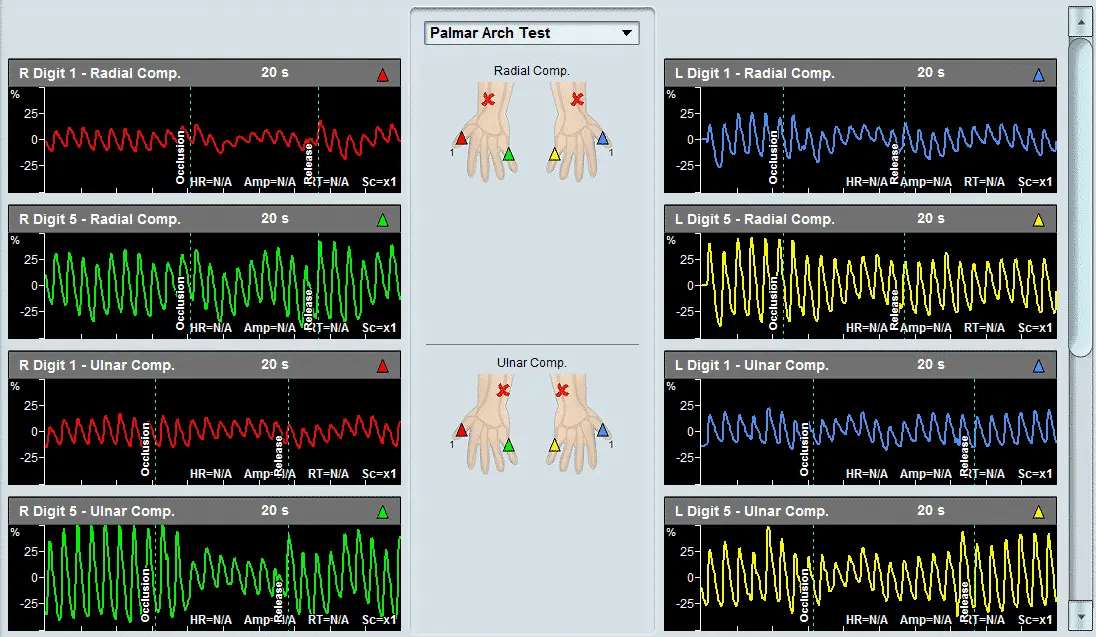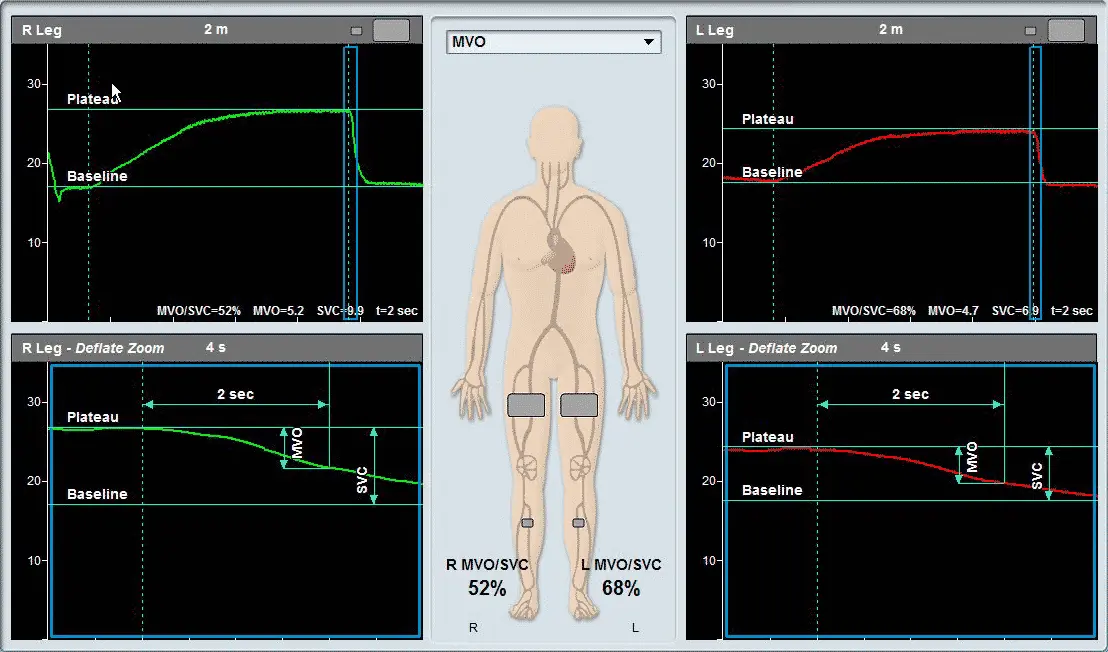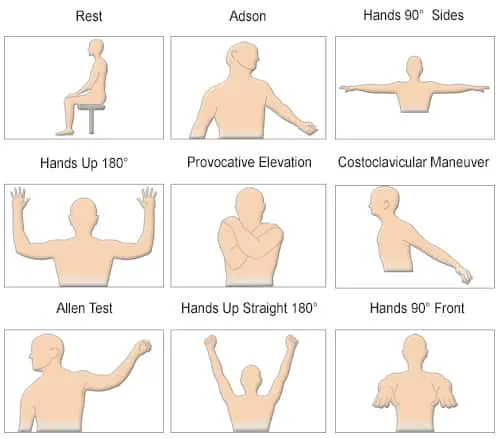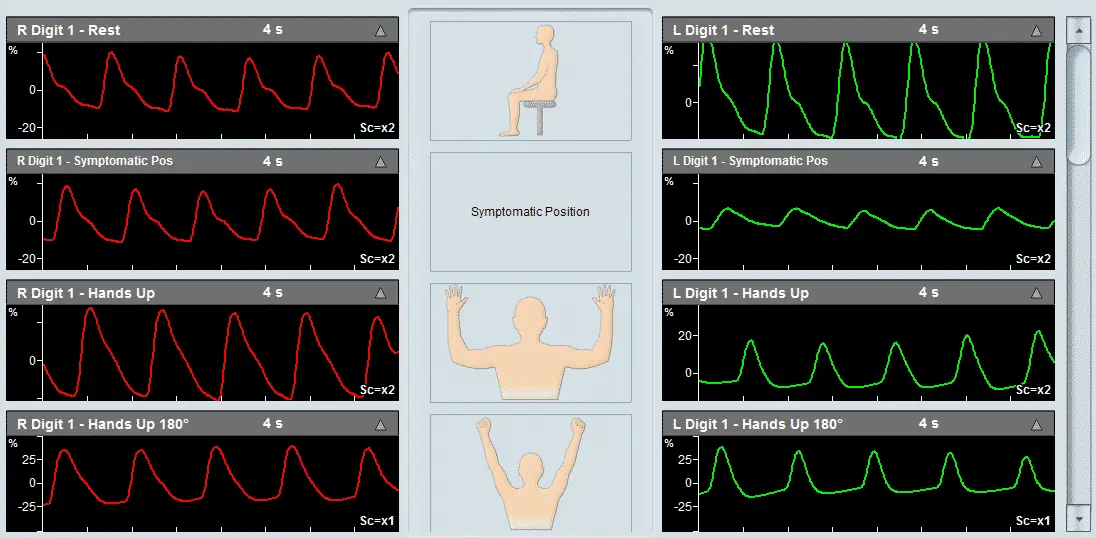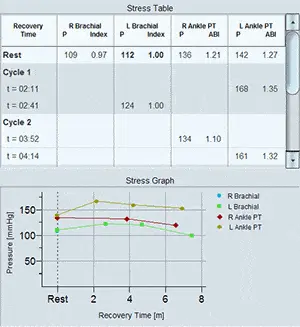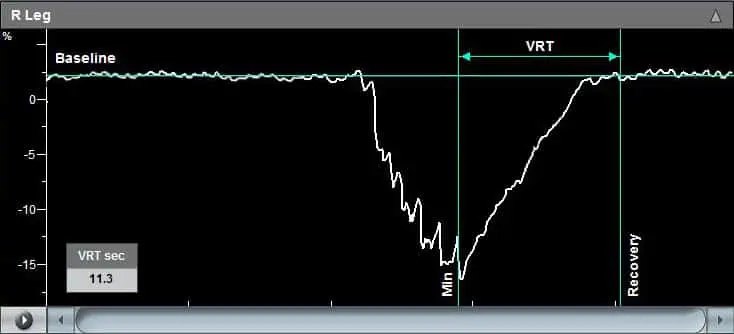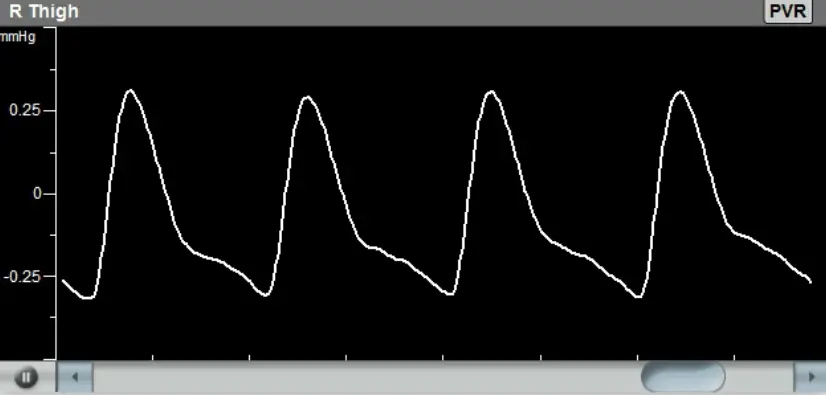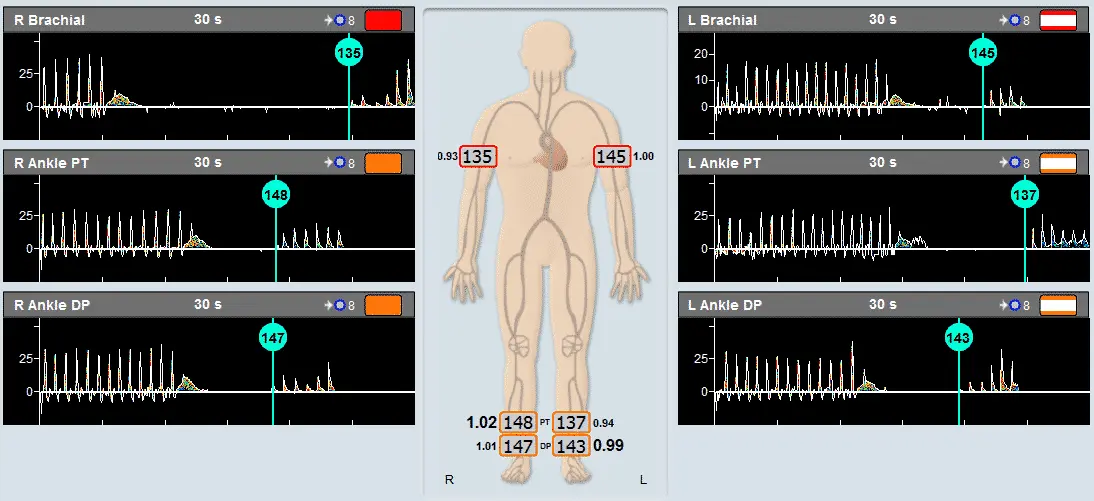Peripheral arterial disease (PAD) is generally referred to as atherosclerosis affecting the lower limbs and is commonly seen in medical clinics. PAD affects approximately 10-15% of the general population and 20% of people over the age of 65 years old.
The most simple and effective non-invasive PAD test is the ankle-brachial index (ABI). The ABI test compares the blood pressure measured at the ankle to the blood pressure measured in the arm. The ABI is calculated as the systolic blood pressure at the ankle (the higher pressure between the dorsalis pedis and posterior tibial arteries) divided by the systolic blood pressure in the arm (the higher brachial artery pressure between the right and left arm). The ABI test can be repeated after walking on a treadmill or after other forms of lower limb exercise to increase the sensitivity of the test.
It is important to provide PAD testing such as ABI in a medical clinic. As a diagnostic tool, it allows for much higher sensitivity than physical examination findings including absence of pulses, femoral bruit, and trophic skin changes.
PAD testing can be used for differential diagnosis of ischaemic lower limb pain (claudication) from lower limb pain caused by other factors such as neurological and musculoskeletal conditions. The treadmill exercise ABI test is particularly useful for this purpose.
When a diagnosis of PAD is established, ABI is a very effective tool to determine the severity of PAD. An ABI of 0.9 or less suggests PAD, an ABI between 0.4 and 0.7 indicates moderate PAD, and an ABI less than 0.4 indicates severe PAD. An ABI higher than 1.4 could suggest the lower limb arteries are stiff due to advanced age or diabetes. The ABI test can also be used to follow up patients with PAD who have received medical, interventional, or surgical treatment.
As PAD is a part of systemic atherosclerosis, the presence of PAD signifies an increased risk of cardiovascular events. An ABI of less than 0.9 is associated with a two- to four-fold increase in relative risk for cardiovascular events and all-cause mortality. The ABI has been considered a surrogate marker of atherosclerosis and a predictor of cardiovascular events. Screening for asymptomatic PAD among high-risk groups, such as people over the age of 65 years old, and people over the age of 50 years in conjunction with smoking or diabetes, may increase early diagnosis of peripheral vascular disease (PVD). This gives the opportunity to initiate secondary prevention by establishing atherosclerosis risk factor modifications such as lifestyle changes and early medical interventions. This can potentially reduce the risk of a patient’s cardiovascular complications.
The ABI test is easily performed with the Viasonix Falcon system. The Falcon system is supplied by Melbourne based MedTech Edge for the Australian and New Zealand market (Figure 1). The Falcon system provides all tools needed to perform the ABI test and many other vascular diagnostic tests. It fulfils all Australian Medicare Benefits Schedule requirements including testing, hard copy of arterial waveform and report to qualify for Medicare payment (Figure 2).
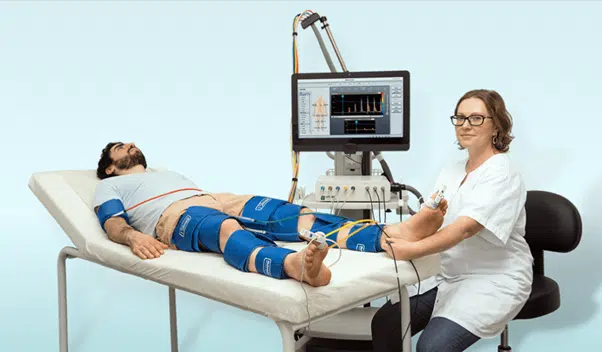
Figure 1. The ABI test with Viasonix Falcon Pro.

Figure 2. Pulsed Doppler waveform of left dorsalis pedis artery recorded with Falcon Pro.

